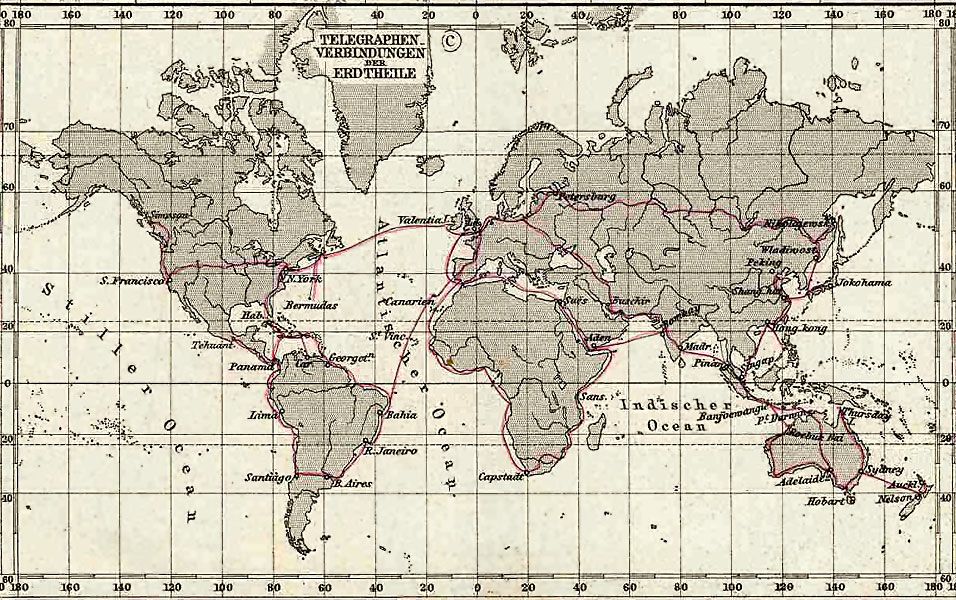I vaguely remember learning about a defunct medium of communication called the telegraph when I was in school. Recently it struck me that I knew almost nothing about this technology that had been the fastest medium of communication available for almost a hundred years (1840s - 1940s).
The history
The first important thing to understand about the telegraph is its place in communications history. The telephone was invented by Alexander Graham bell in 1876. In 1897 Marconi established the first radio station. The television was invented in the 1920s.
The electronic telegraph preceded all these mediums by decades: its first commercial installation was in 1837. By 1866 the first transcontinental undersea telegraph cable was laid. You could now send a message across the Atlantic in minutes; previously you would have had to send your message by ship which would have taken about two weeks.
This made the telegraph the first communications technology that could send a message hundreds of miles within minutes.

What was the process for sending and receiving a telegram like?
From Atlas Obscura:
The method of sending a telegram was simple. By visiting the office of a telegraph company, or later, by over the telephone, you would compose a message as briefly as possible, for telegrams charged by the word. The message was then conveyed by the electric wire in Morse code to its destined office where it would be written or typed, stuck to a form and hand delivered, usually by a boy on a bicycle. If you were living in Pittsburgh in the 1850s it was entirely possible your telegram would have been delivered by a young Andrew Carnegie. Or over in Port Huron, Michigan, a boy of the name Thomas Edison.
Sending a telegram was also expensive – according to Vladimir F on StackExchange, sending a 15-word telegram (one word = five letters) across the Atlantic would cost $45 today adjusted for inflation.
How a typical Morse system telegraph worked
The Morse code was the standard for most telegraph systems. The operator at the transmitting end would translate the message into Morse code, and send the message by tapping on a Telegraph key. A short tap represented a dot, and a long tap was a dash.
Tapping the key connected a circuit between the transmitter and the receiver, which triggered a mechanism on the receiver end that would connect an ink roller with paper tape. In this way the dots and dashes were transmitted, and the receiver would translate them back into human language.
Compared to the complicated ways we transmit information across wires today, this system of transmitting information simply by connecting a circuit seems incredibly simple and elegant.
Further reading
- Technology You Didn’t Know Still Existed: The Telegram, Atlas Obscura
- Electrical Telegraph, Wikipedia
- I Tried to Send a Telegram in 2016, The Atlantic
